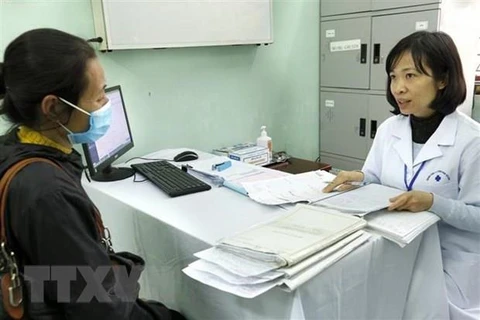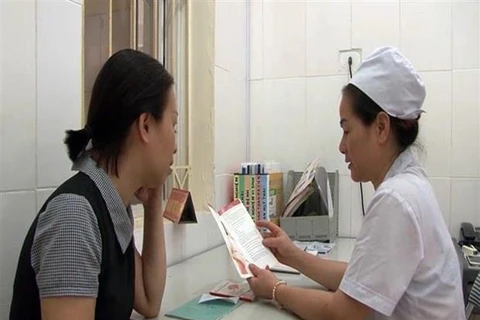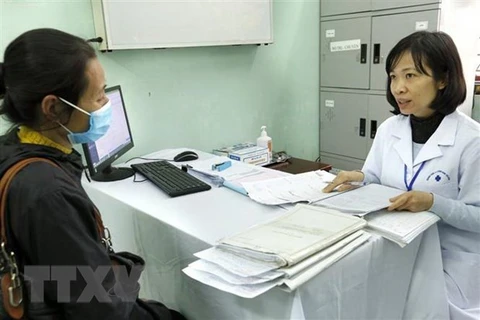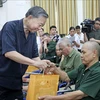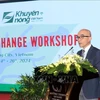Hanoi (VNA) – Vietnam has made a stride in the fight against HIV/AIDS in recent years, recording a declined number of new newly-diagnosed cases of HIV, those living with and killed by AIDS.
According to Dr. Hoang Dinh Canh – Deputy General Director of the Ministry of Health’s Department of HIV/AIDS Prevention and Control, after five years of Vietnam’s commitment to meeting the UN’s 90-90-90 goal in preventing and controlling HIV/AIDS, the country has achieved remarkable results.
Addressing a workshop on promoting the role of communities in preventing HIV/AIDS in Hanoi on November 14, which was jointly hosted by the department; the Global Fund to Fight AIDS, Tuberculosis and Malaria; and the US President's Emergency Plan for AIDS Relief (PEPFAR) in Vietnam, Canh said the number of HIV-infected people being treated is constantly increasing over the years.
In Vietnam, there are currently 131,000 patients receiving ARV treatment, while more than 52,000 people are being treated with methadone, he said.
About 2 million people receive HIV tests each year, and dozens of millions of people have access to communication campaigns, and receive condoms and needles.
Vietnam is seen a bright spot in HIV/AIDS prevention in 2019. Its health sector has worked hard to effectively reduce the amount of HIV in the body (viral load) at an undetectable level.
Vietnam is also drastically implementing a large-scale communication campaign themed "K = K", which means that people with HIV who achieve and maintain an undetectable viral load – the amount of HIV in the blood-by taking ART daily as prescribed cannot sexually transmit the virus to others.
The K = K programme (Khong phat hien = Khong lay truyen) or U=U (Undetectable = Untransmittable), is is an important finding to encourage people diagnosed with HIV to live actively and have early access to treatment services and comply with treatment and periodical test for HIV load.
This scientific evidence helps service providers and communities reduce stigma and discrimination against people living with HIV/AIDS.
Foreign experts said that Vietnam is one of the pioneers in K = K activities due to the early integration of these findings into national policies and programmes. It is also a country with the highest HIV restraint rate in the world.
Canh attributed the results to the strong participation of community-based organizations in the fight against HIV/AIDS.
If only the public health system does the work, it will not be able to effectively access many targeted people, especially vulnerable groups in society, he said.
It is estimated that social organizations contribute 20-50 percent to the HIV/AIDS prevention and control services in Vietnam.
Mark P. Troper – Coordination Director of the US Embassy in Vietnam’s PEPFAR, praised contributions of community-based organisations to Vietnam’s HIV/AIDS prevention and control programme.
He also expressed his impression on ways done by Vietnam in organizing, sharing responsibility, and joining hands towards controlling the epidemic and improving the quality of life of people affected by HIV.
Apart from offering services such as communication, distribution of needles and condoms, and transportation of people living with HIV/AIDS to health stations for receiving appropriate services, or providing at-home-care service, social organizations also provide HIV testing and counseling in the community, and Pre-Exposure Prophylaxis (PrEP) service for HIV prevention.
The workshop aims to recognize contributions of community organizations to the fight against HIV/AIDS, and mobilize the participation of the community and community-based organizations to realise HIV/AIDS control goals.
Statistics show that in the first nine months of 2019, over 7,700 new cases of HIV were reported and 1,428 died from relevant illnesses in Vietnam. So far, there have been over 211,000 people living with this virus./.

